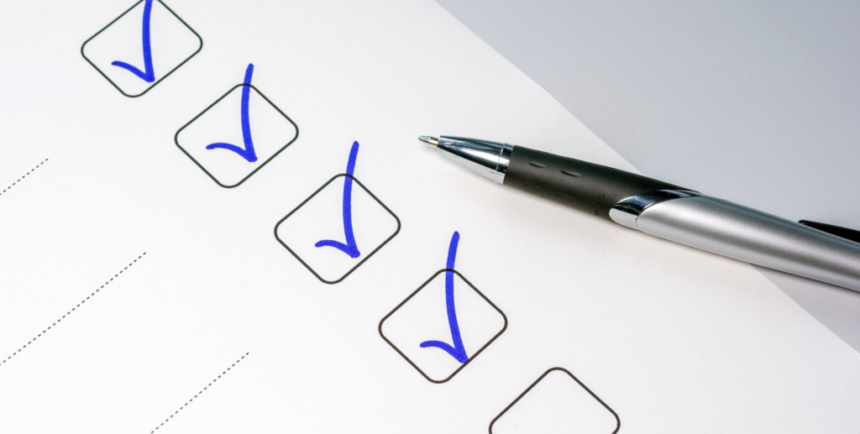(PDF checklist download at the bottom.)
On the surface, flipping a house is a three-step process: buy, rehab, and sell.
While that’s the basic approach to house flipping, there’s a lot more to it. And that’s why you need a house flipping checklist. This checklist will guide you from pre-renovation through closing day.
1. Pre-Renovation Phase
The pre-renovation phase entails everything that happens before you touch the property. It’s the phase where you create the foundation for everything to come.
Research and planning
This is where, thorough groundwork and strategic planning, you set the stage for a successful flip. It involves gathering key information and devising a plan to guide the subsequent steps of the renovation process.
- Define goals: Establish clear objectives for your house flipping project, including financial targets, timelines, and desired property characteristics.
- Market research: Conduct thorough market analysis to understand local real estate trends, property values, and buyer preferences in your target area.
- Develop a plan: Create a detailed strategy covering flipping costs, renovation scope, timeline, and resources needed.
Property acquisition
This entails everything associated with finding and buying a property.
- Locate properties: Actively search for potential properties, using various resources to find options that meet your investment criteria.
- Choose a property: Evaluate and select a property that aligns with your goals, budget, and market research. And of course, there should be potential to make a profit.
- Secure financing (if needed): Arrange the necessary funding for your project, exploring options like mortgages, loans, or private investors to finance the purchase and renovations.
- Close on the property: Finalize the acquisition by completing all legal and financial processes.
2. Renovation Phase
The renovation phase involves executing your planned improvements to the property and efficiently managing resources and timelines to enhance its value and appeal.
Designing and planning
Designing and planning in the renovation phase is when you create detailed blueprints and schedules that align with your vision and budget.
- Create a renovation plan: Develop a renovation plan outlining all required works, materials, and timelines to transform the property.
- Hire contractors: Select skilled and reliable contractors. They should have the expertise and experience necessary to execute your renovation plan efficiently and to a high standard.
Renovation execution
This is the active period of making structural and aesthetic improvements to the property. You must closely adhere to the plan and timelines while managing contractors and resources.
- Manage renovation: Oversee the renovation process by coordinating tasks and resources to ensure the project stays on schedule and within budget.
- Address any issues: Promptly identify and resolve any challenges or unforeseen problems that arise during the renovation to maintain momentum.
- Conduct regular inspections: Make sure you make frequent inspections throughout the renovation, with an eye toward quality control and adherence to building codes and project specifications.
Final touches
This involves adding the finishing aesthetic details to the interior and exterior of the property.
- Interior design finishes: Implement the final interior design elements, such as paint, fixtures, and fittings.
- Curb appeal: Improve the property’s exterior and landscaping to boost its first impression and attractiveness to potential buyers.
3. Post-Renovation Phase
The post-renovation phase focuses on preparing the property for sale, including staging, marketing, and addressing any remaining details.
Inspection and sale prep
Inspection and sale prep involves conducting inspections to ensure compliance with regulations and preparing the property visually and legally for listing and sale.
- Final inspection: Conduct a comprehensive final inspection to ensure all renovations meet quality standards and regulatory requirements.
- Quality assurance: Implement a thorough quality assurance process to verify that all aspects of the renovation adhere to the planned specifications and desired outcomes.
- Photography: Take high-quality photographs of the property, showcasing its features and improvements.
- Staging: Strategically stage the property with furniture and decor to enhance its appeal.
Sale and closing
The sale and closing phase encompasses the process of listing the property, negotiating with buyers, and finalizing the sale.
- Set price: Determine a competitive and profitable asking price for the property, based on market research and the value added through renovations.
- List property: Officially list the property on the market, utilizing various platforms to reach potential buyers and real estate agents.
- Host open houses: Organize and conduct open houses to showcase the property to prospective buyers.
- Negotiate offers: Engage in negotiations with interested buyers to reach a mutually agreeable sale price and terms.
- Accept and close: Finalize the sale by accepting a suitable offer, completing all necessary legal paperwork, and closing the transaction to transfer ownership.
Conclusion
Following a house flip checklist is crucial to your success, as it provides a clear and structured path through every step of the flipping process. This checklist not only helps you stay organized and on time with your renovations, but also minimizes the risks and uncertainties commonly associated with real estate investing.
Your one-stop guide to making a profit with fix-and-flips
A step-by-step plan to succeed in your first or next house flip, this bundle will teach you how to budget and estimate every aspect of your renovation, from cosmetic renovations to complex installations and upgrades. Discover the ins and outs of flipping real estate in any part of the economic cycle, find options for financing your flips, and undertake larger renovation projects.
Note By BiggerPockets: These are opinions written by the author and do not necessarily represent the opinions of BiggerPockets.









